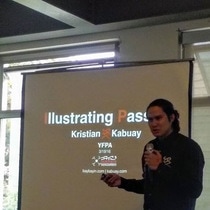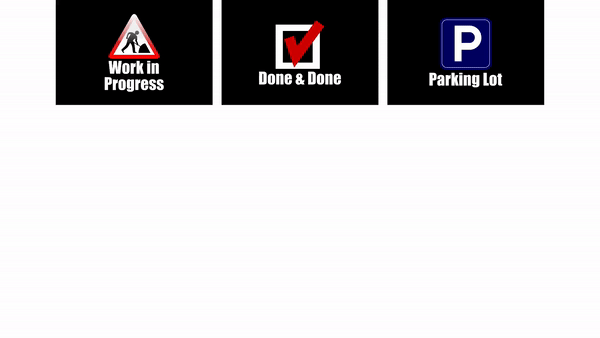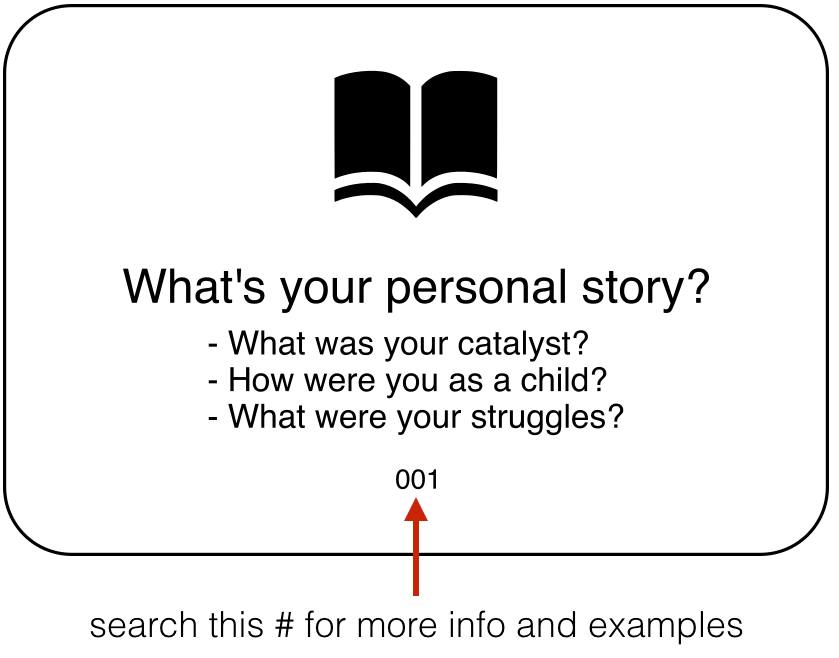Aha!

I'm Kristian Kabuay, an artist, entrepreneur and culture bearer. As part of my continuing education to grow my personal business, I've studied and tried many methodologies and almost every gimmick by internet marketers to try and make the elusive "passive income" to live the 4 Hour Work Week. The game changer was when I stopped with the gimmicks, trying to make a quick buck and focused on providing value first.
The transformation accelerated when I studied Seth Godin, Ramit Sethi, Tim Ferris, Lean Startup and Business Model Canvas methodologies. I've also been able to take this approach to corporate environments at my day job as a product manager. Next to my cultural work, small business has become a 2nd passion.
In a previous life, I was a consultant for a couple of startups. One day, I met my friend/client, to talk about her business and how she want's to start an online school for passive income. I get excited because, that's my shit! I go into the Lean Startup and Business Model Canvas mode and start firing off questions, showing the canvas, setup a Trello board, etc. While the conversation was good, I felt that she was getting lost.
As I was walking home, I was bothered that I overwhelmed her. Before we started talking business, I showed her some flashcards I created for teaching the prePhilippine system and she totally got it. If I can teach the basics of a foreign writing system with the cards, why can't I do the same for business? In our next meeting, I did an experiment and broke down my big list of questions to focus on 3 topics to simulate the flashcards method. These were 1) Her personal story, 2) Who her potential customers (customer segments) were and 3) Their problems (problem statement). This method resonated with her and was an initial validation of spearheading this project. Story to be continued on the blog...
The transformation accelerated when I studied Seth Godin, Ramit Sethi, Tim Ferris, Lean Startup and Business Model Canvas methodologies. I've also been able to take this approach to corporate environments at my day job as a product manager. Next to my cultural work, small business has become a 2nd passion.
In a previous life, I was a consultant for a couple of startups. One day, I met my friend/client, to talk about her business and how she want's to start an online school for passive income. I get excited because, that's my shit! I go into the Lean Startup and Business Model Canvas mode and start firing off questions, showing the canvas, setup a Trello board, etc. While the conversation was good, I felt that she was getting lost.
As I was walking home, I was bothered that I overwhelmed her. Before we started talking business, I showed her some flashcards I created for teaching the prePhilippine system and she totally got it. If I can teach the basics of a foreign writing system with the cards, why can't I do the same for business? In our next meeting, I did an experiment and broke down my big list of questions to focus on 3 topics to simulate the flashcards method. These were 1) Her personal story, 2) Who her potential customers (customer segments) were and 3) Their problems (problem statement). This method resonated with her and was an initial validation of spearheading this project. Story to be continued on the blog...
How it works
1) Lay down the 3 header cards
2) Go though each of the questions in the cards placing them under one of the 3 headers. Be creative and come up with wild ideas and use your imagination.
3) Document your answers (old school pen & paper or something like Trello). Don't spend too much time with this because it may change. Take no more than 5 minutes with your 1st try. It's OK to not have an answer. That's what the Parking Lot is for.
4) Validate your answers with people
2) Go though each of the questions in the cards placing them under one of the 3 headers. Be creative and come up with wild ideas and use your imagination.
3) Document your answers (old school pen & paper or something like Trello). Don't spend too much time with this because it may change. Take no more than 5 minutes with your 1st try. It's OK to not have an answer. That's what the Parking Lot is for.
4) Validate your answers with people
The cards
When testing the concept of the deck on myself, I realized that the cards needed to be separated out into groups to help guide me through the journey from You > Customer > Solution > Money > Operations.
I've flipped the order in reverse, putting Money and Operations at the very last. When and idea is born, the typical starting point would be to build right away while the excitement is still in the air. Money and Operations is something that's tangible that gives you instant gratification. How satisfying is when you first open a box of business cards or calculate costs?
I've flipped the order in reverse, putting Money and Operations at the very last. When and idea is born, the typical starting point would be to build right away while the excitement is still in the air. Money and Operations is something that's tangible that gives you instant gratification. How satisfying is when you first open a box of business cards or calculate costs?
|
You
14 cards - It all starts with you. You're the most important reason why the business will succeed or fail. These cards explore your intention, weaknesses, personal brand, etc. Customer 13 cards - If you cannot connect with your customer, it's game over. You need to have intimate knowledge and empathy of your customer's dreams, aspirations and their specific problems. Solution 12 cards - These cards explore how you're going to solve the customer's problems. Money 5 cards - Unless you're a trust fund kid, you'll have to figure out how to bring your ideas to life. Self-funded? Loan? Crowdfunding? Operations 5 cards - Once you get started, what do you need to do to keep the lights on? |
Want to follow the journey and learn more? Check out my blog




